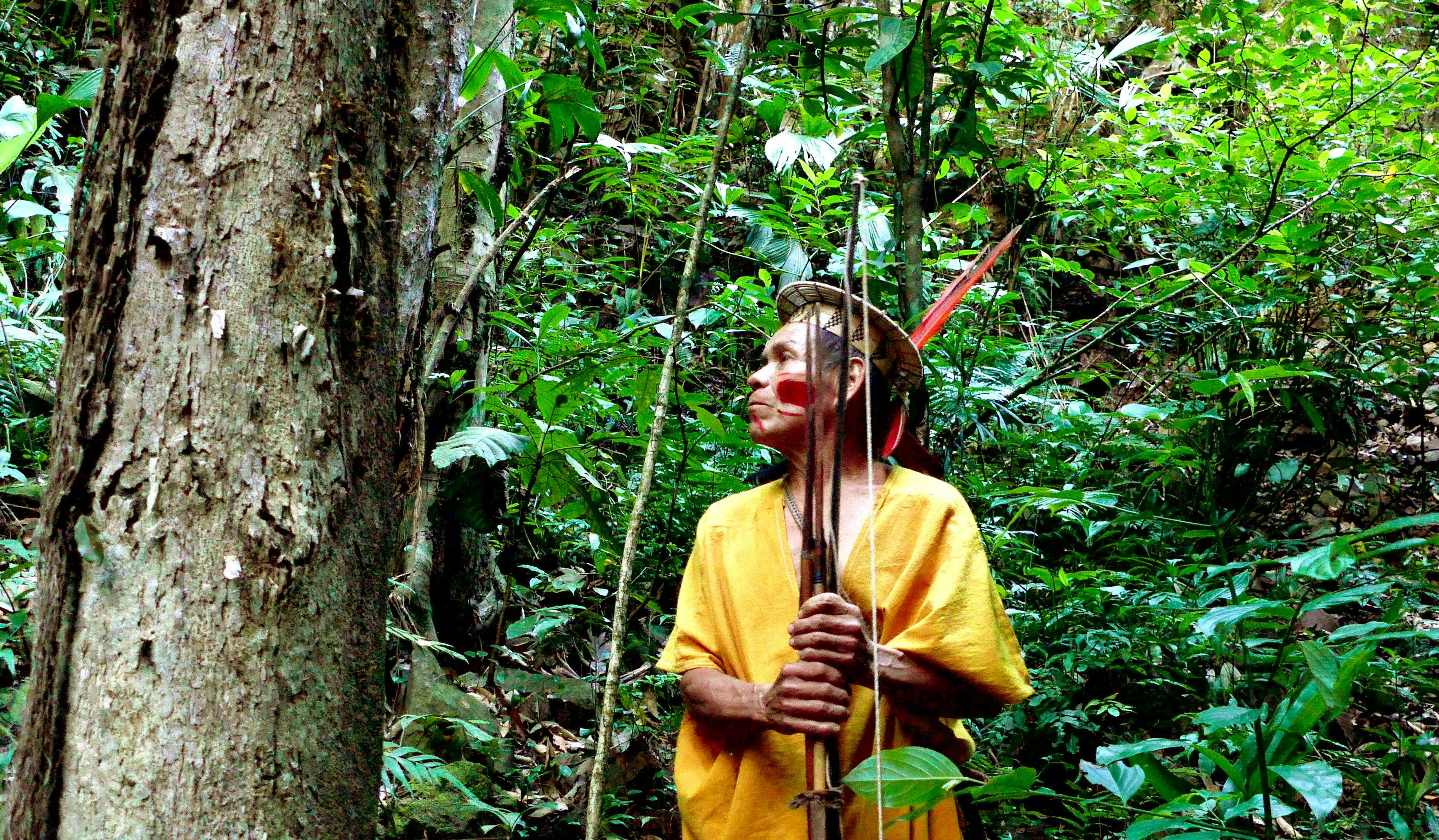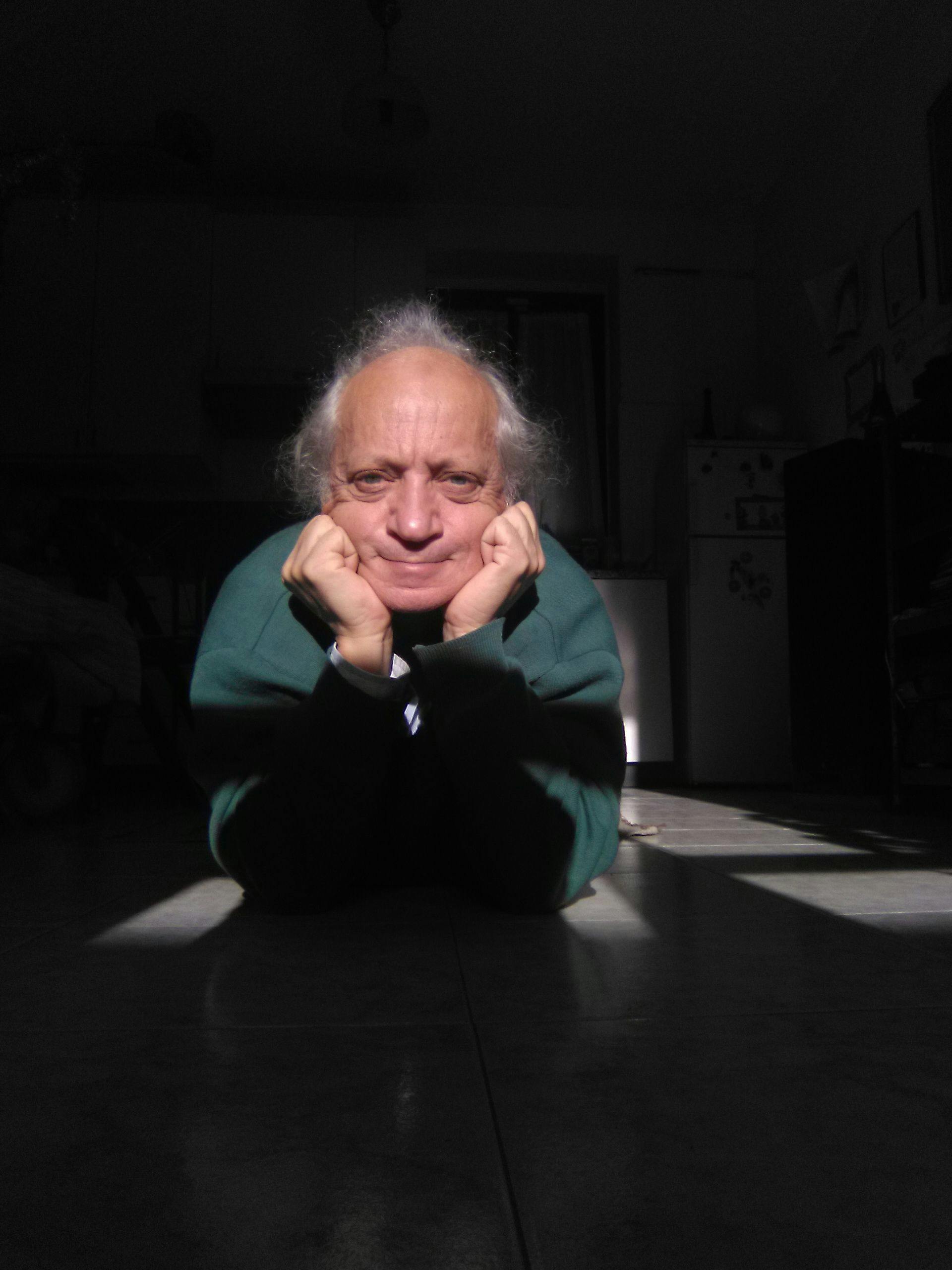By the end of June the rainy season is almost gone, but some sudden unforeseen squalls may still occur daily in the Central Forest of Peru.
I had been visiting the community of Mapiniki for six months, which is composed of two different ethnic groups, the Ashaninka and the Yanesha. My presence in the village had been accepted—albeit with some initial scepticism—since the beginning of December, when I had met with the community to propose the creation of a collaborative multimedia book. Through a process of negotiation, we slowly developed the project in a way that allowed both sides to incorporate their experiences and produce a book that would benefit everyone. This article tells the story of my relationship with the community of Mapiniki, and our collaborative project.
I grew up in a humble family in a rural area close to the suburbs of Palermo, the capital of Sicily, surrounded by the smell of freshly ploughed fields and the vespertine tales of my lovely grandfather. It was these tales that triggered my enthusiasm for travelling and the aim of exploring nature in its holistic meaning. In the late 1980s, I met the Sami people of northern Scandinavia for the first time, and their traditional way of living attracted me, so when in 1990, I visited Peru and met the Aymara people living near Lake Titicaca, it reignited my passion for indigenous peoples and their traditional ways of life.
Although my knowledge of ancient Peruvian civilizations was minimal, my decade of experience in TV production had lent me skills in documentary film-making. Once back at home, I began learning what I could about Peru and its peoples. I had no PhD or anthropological background, but a deep eagerness to learn from all peoples and cultures I could meet. I began travelling around the world and eventually produced around 80 documentary films. In 2016, a meeting with a Sami singer in Sapmi, Northern Norway inspired the 'My Indigenous Roots' project (see below), with the mission of dedicating my next projects to recording oral traditions around the world to preserve them for the future, as well as showing hidden gems very often ignored or misrepresented by mainstream media.
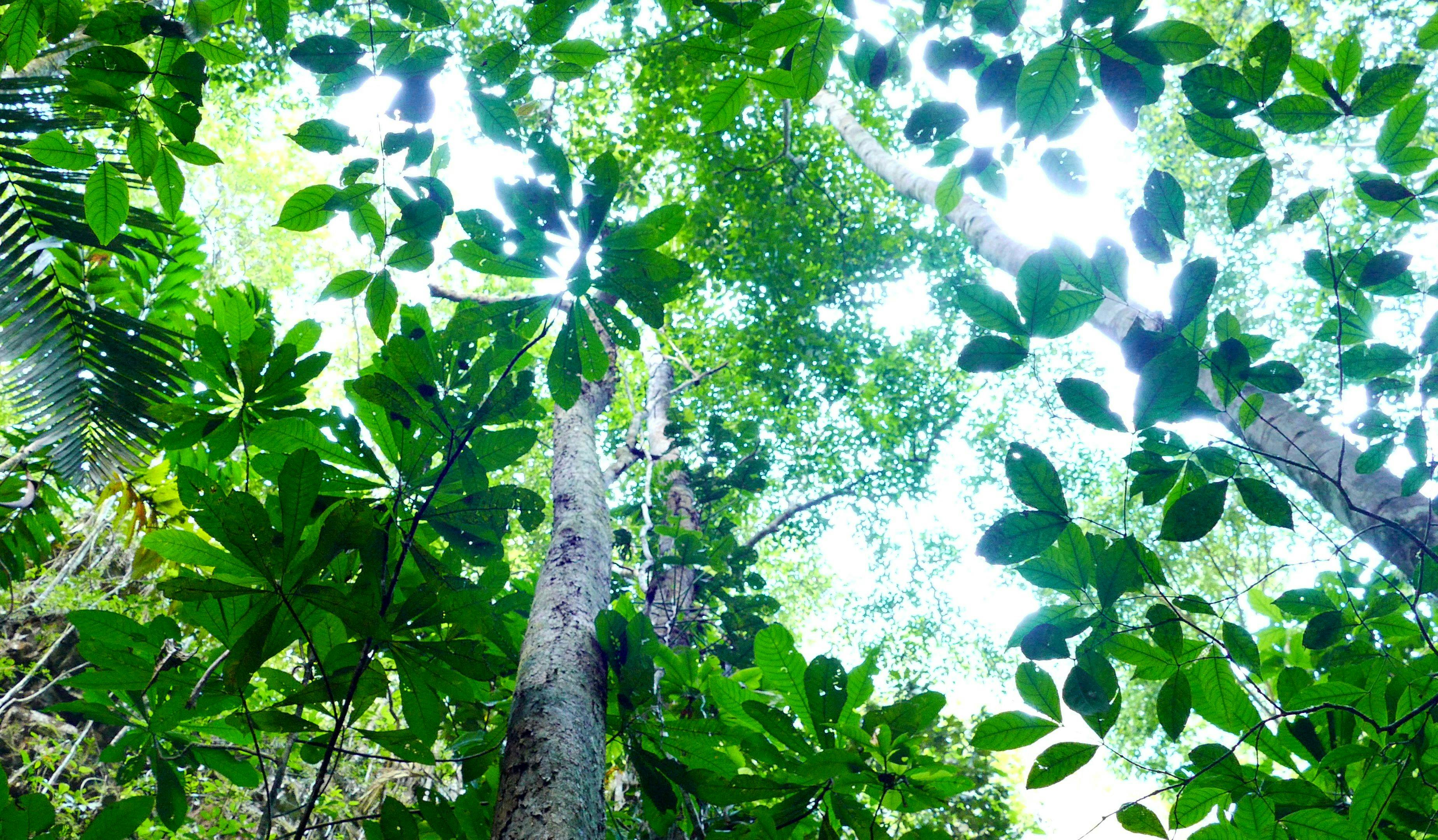
In the year 2000, navigating for the first time along the Amazon River, I was captivated by the majesty of the rainforest with its towering trees, harmonious environment, and diversity of ethnic groups. During this initial trip, I met the Huitoto people in Pevas, Peru. When I returned many years later, I had no clear plans for a project, but I brought along a 4K Lumix FZ1000 camera and a directional mic just in case.
One day, completely by chance, I had joined a group of young local entrepreneurs that were visiting an indigenous community in the Central Forest area of Chanchamayo to negotiate tourist benefit agreements. Even though I knew nothing of the community itself, I instantly felt at ease and some positive vibes arose within me. While the businessmen talked, I began to quietly look around the village. Finally, on our way back, we met a strange palm-like plant with a red inflorescence, and I suddenly broke into conversation with my guides, asking the name of this unusual plant.
Masheñ Chomoch, one of the indigenous guides who accompanied us, gave me a simple but intriguing answer, praising the plant's virtues as an herbal remedy for several illnesses. I asked him to repeat the explanation in front of my camera so I could film it. "This plant we call bombonaje (Carludovica palmata). It is a little palm that we use for many things. Among men it is famous for being effective in the care of impotence—but you have to collect it at a special moment according to the moon cycle."
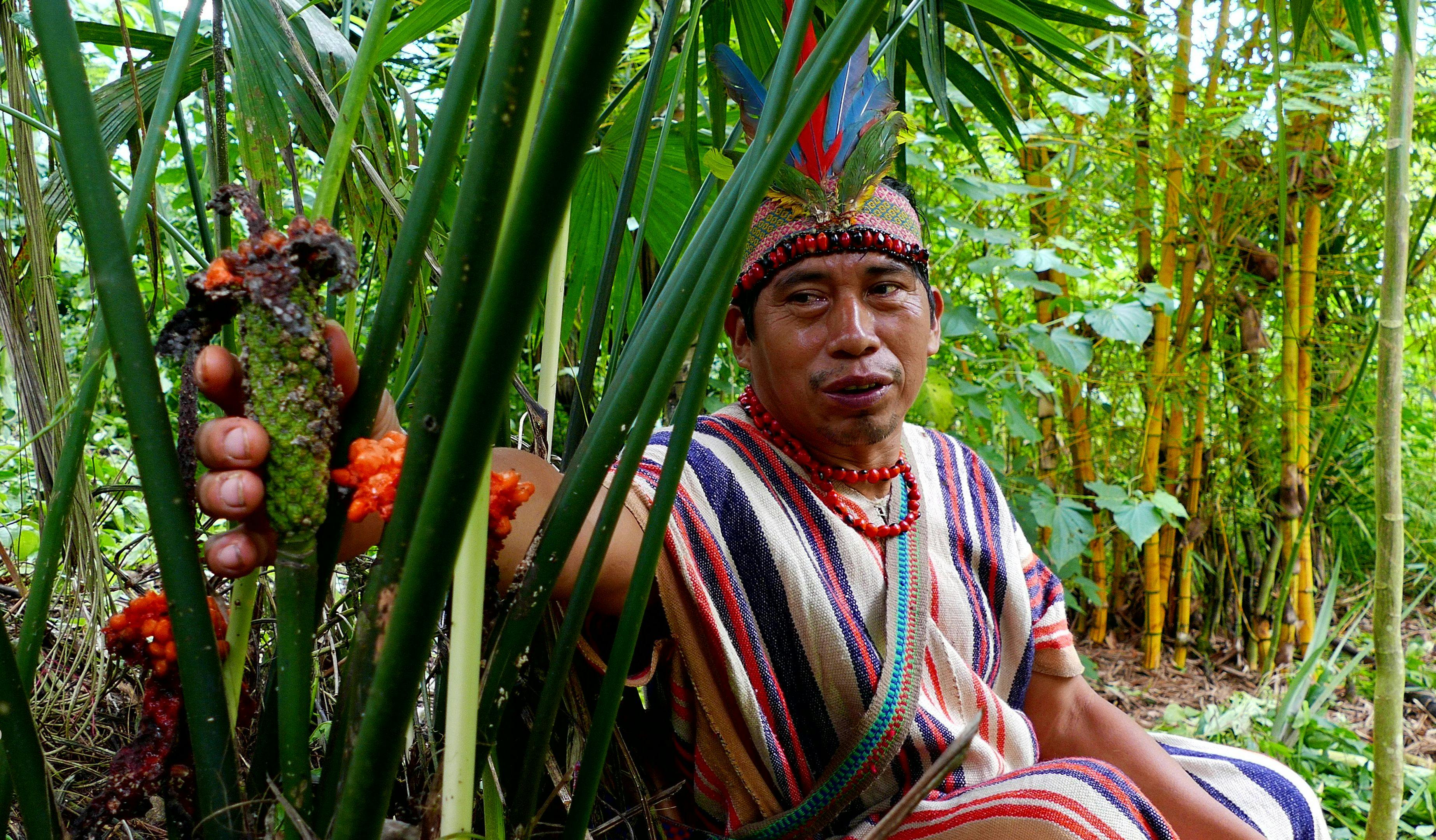
This brief but curious explanation triggered an idea I had been concocting in my mind for many years, and without hesitation I asked Masheñ Chomoch if he had a deep knowledge of medical plants. He replied in the affirmative. I then suggested that we could collaborate to produce an interactive multimedia book with videos of different plants used as ancestral remedies. Masheñ Chomoch quickly agreed; he was excited at the opportunity to share and preserve his knowledge. I had never before seen so happy a person! Meanwhile, the rest of the group had left, so we quickened our pace to reach the community camp.
That very night I received the following message on my cell phone: "I have spoken with the community chief, and he has agreed with our idea, but he asked if we could make a more comprehensive book including the history and traditions of our community for the benefit of the generations to come. If you agree, you can visit us again to attend our Sunday assembly."
That was the beginning of my experience with the people of the community of San Jerónimo—or Mapiniki, as it was formerly called, until it was renamed to be registered by the Government in 1975.
Located in the subtropical area of the Junín and Pasco regions of Peru, the Selva Centrale (Central Forest) is a mid-elevation montane jungle, called selva alta or ceja de selva, at an altitude ranging between 800 and 1500 metres above sea level. There are only two seasons during the year, the rainy one (November/May) and the dry one (July/October), even if, as stated, sudden downpours at any time of the day are not uncommon. But nevertheless the sun always peeps, never leaving a totally dark and cold day. The community of Mapiniki is located on the banks of the Perené River near Puerto Yurinaki in the province of Chanchamayo in the Junín region.
But let's take a little step back.
When we were already at the end of the collection of testimonials for the book, we had set up a meeting with the community chief and some members to visit some places necessary to complete the chapter on ancestral beliefs.
Although I had arrived at the set time, that day we had to unexpectedly postpone the excursion and immediately take shelter from an unexpected rain that did not cease.
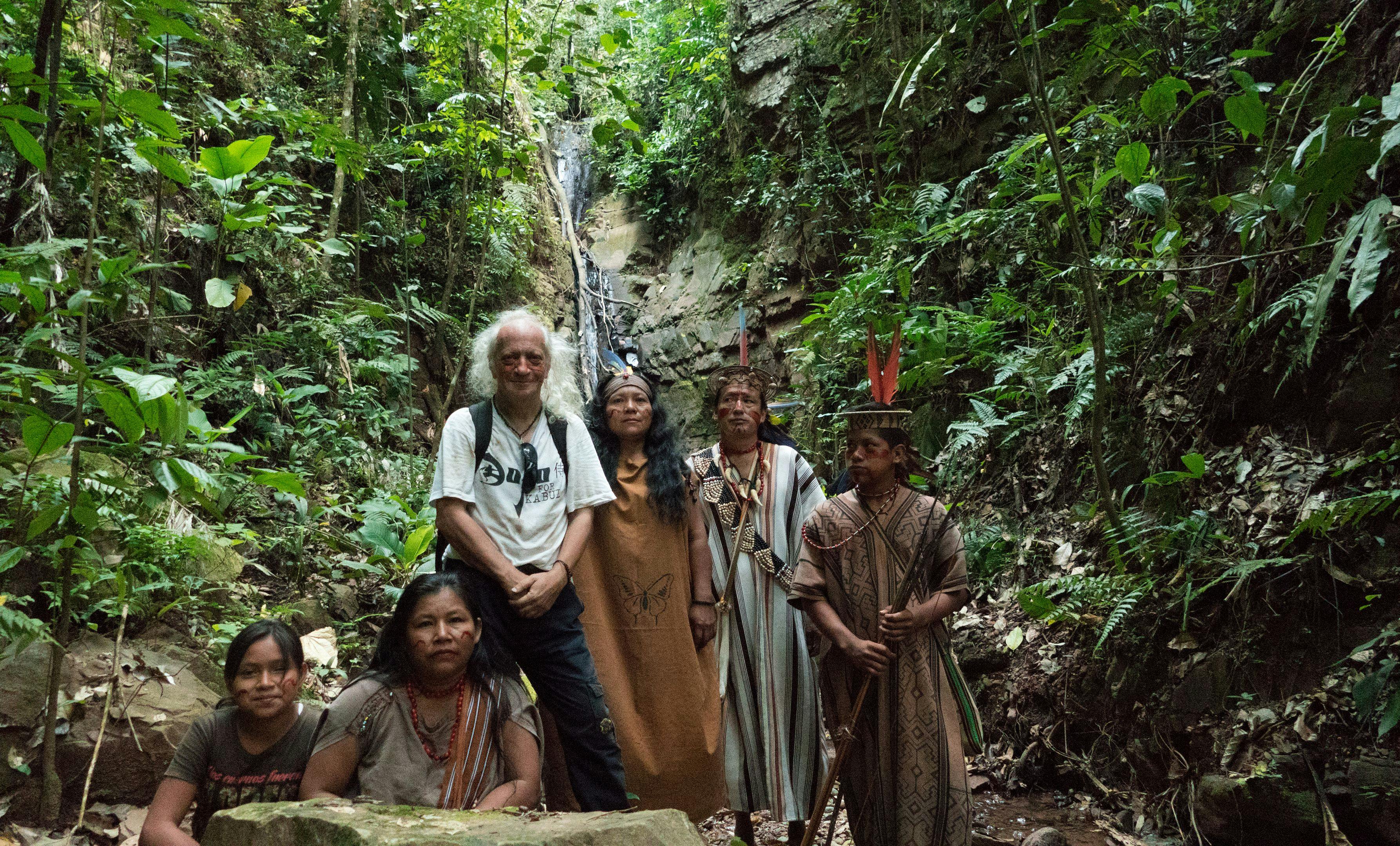
While the other community members took the opportunity to return to their homes, I proposed to the chief to keep me company and drink a cup of masato (manioc beer) together. Soon the conversation became more friendly than usual and we moved on to the topic of sacred places, a theme that had remained rather esoteric until then.
I asked Pinkatsari Parari (Chief Wolf):
You told me that the Ashaninka people have lived in the Central Forest since time immemorial. Did they develop a special relation of worship with some places or plants considered sacred for different reasons?
He replied: Yes, actually, apart from Tambo del Diablo, Camino del Kashekare, and Casa del Murciélago, which we have already visited, I will take advantage of this very special morning to unveil to you what is in our tradition called 'The Sacred Tree'. It is a very important place for us, which we are still using and cultivating. It is our "very sacred place of meditation." In that place of the sacred tree there is a thick forest, a forest for our protection, which in our dialect is called 'Maniri'. So that "tree" is really a character, a "truly spiritual person," where only our grandparents could enter there.
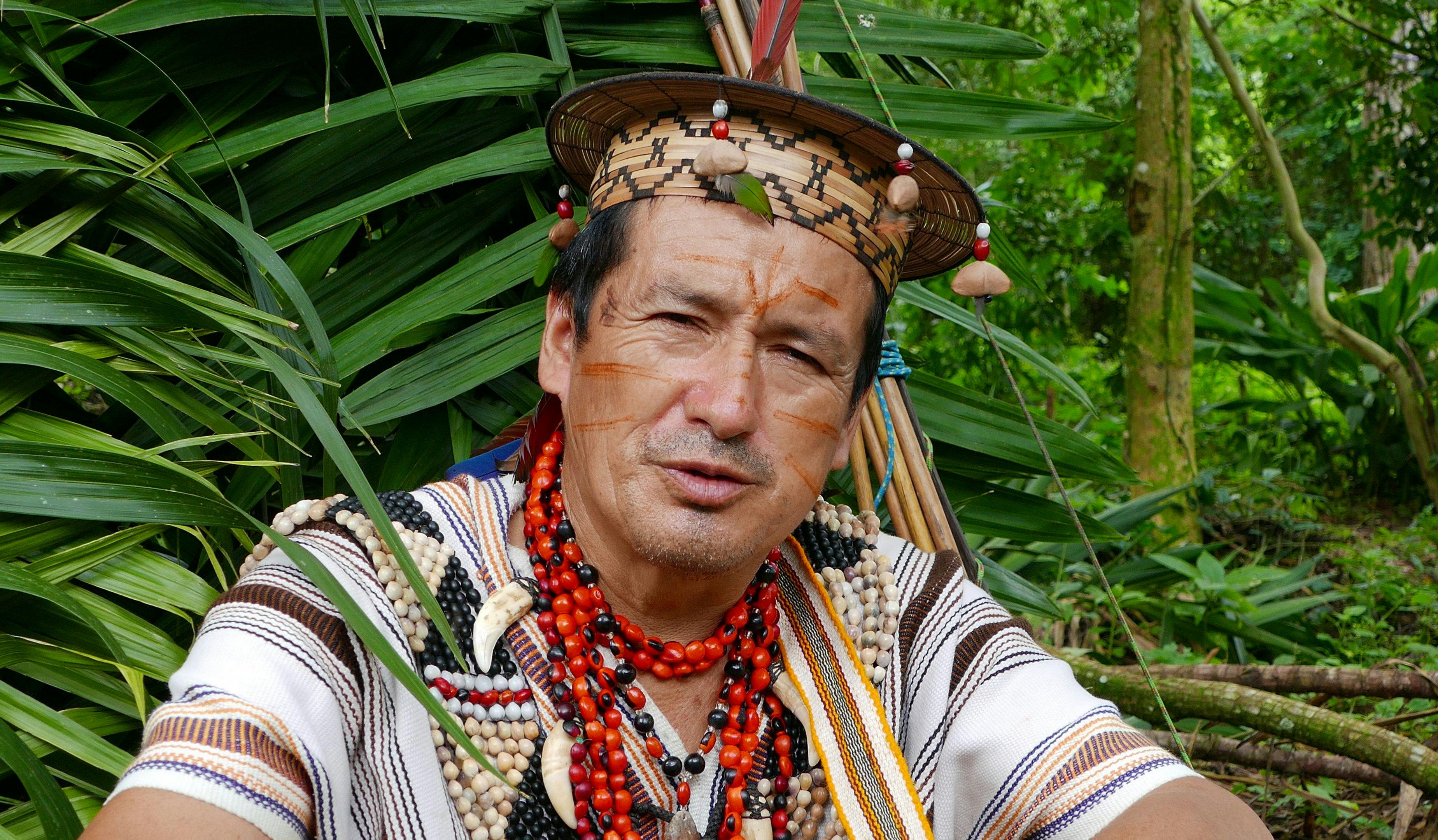
What does it mean that only they can enter there?
They could enter because they were healers [shamans and medicine people]. As you know, they were called Chiripiaris, Tabaqueros, and Ayahuasqueros [three of the most eminent figures of the ancient Ashaninka society]. They could create a type of dialogue and ask him, Maniri, for the necessary medicine, just as you do with a doctor. Do not forget: "This tree sees and feels like a person, it is a sentient being!"
How did they do it?
Well, this is very important! My grandfather related to me that "they told him [the sacred tree] the disease they had or had to cure." Then they knew which part of his bark had to be collected, the dose to use and whether to bathe with this bark, specifically during the full moon. Hence, the barks were used for many diseases, indeed.
So they had a good relationship with nature and the bark of this tree is a medicine that even now is still good. We continue to cultivate this ritual of worship, because in itself we sincerely still have "this power of nature." What we really want is "to awaken in the new generation the knowledge that there are not only doctors and scientists but also 'our powerful nature with its great spiritual power' that also they really have inside."
But why do you call it sacred?
We truly call it "a sacred place for the reason that no person can easily enter it. Nature itself listens and is attentive to our good or bad intentions."
So for this reason, when someone not spiritually authorised tries to go there, about a kilometre away from the place, everything begins to cloud over and to darken, the winds start blowing and as you get closer it starts raining and among the rain, trees and branches fall while lightning flashes. At that point "he" [Maniri] turns into fog; all around becomes foggy and frightening thundering roars of a tiger can be heard echoing repeatedly.
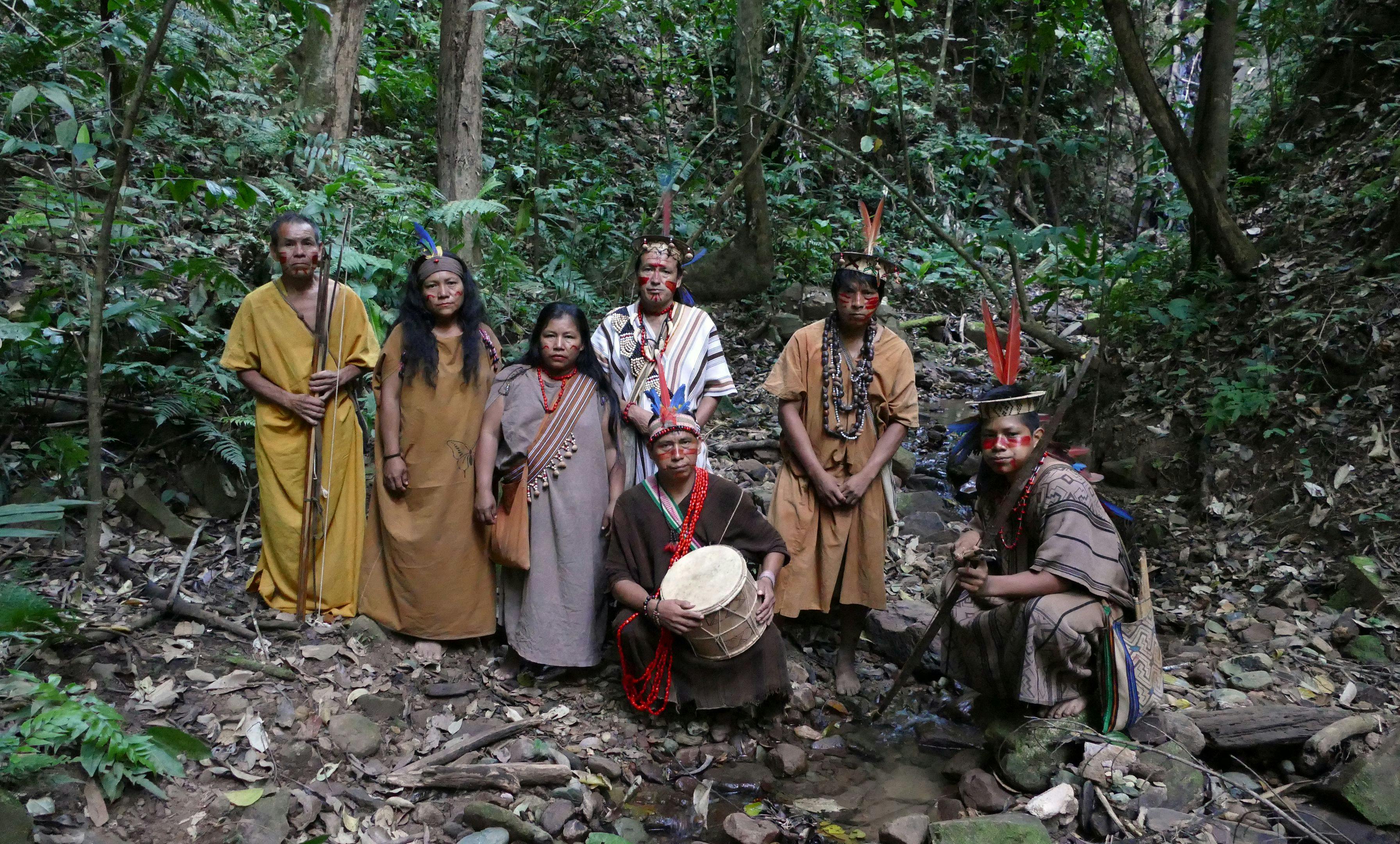
But what kind of tree is it? Do you know the scientific name?
No, I don't know the scientific name, my grandparents were not biologists, they didn't need to worry with such labelling of life.
"Many people do not believe, but indeed it does exist!! I touched it, I have been there."
This is the reason I think it is a sacred place; those who can enter are only the authorized people whom nature provides. I am sorry, but I cannot disclose more on this topic.
What did you say it's called, this tree?
We call it 'Maniri'.
And what does Maniri mean?
"A Maniri is a kind of powerful tiger. It is a powerful tiger that looks like a tree." So it really is an antidote not only for diseases, but also to help you attain your secret, whatever you want to have, love, money or something else. It is like a treatment that you can drink, so it can also help you, it can help you in a case of impotence, your physical preservation; as I said, it's for everything.
"This is a power that carries our nature within it."
Is it far from the community area?
It is located about four kilometres away, however, there is no good access. A path has not been created because "he" does not really allow it and hitherto, there have been many serious accidents; however, it is about three hours' walk from here.
Have you brought other people from the community up there?
No, not many. Only the people who really want to go arrive, because sometimes it also happens that you arrive at the place and people become afraid, very scared. So we don't risk bringing foreign people or strangers there, because "he, the tree" doesn't really allow us.
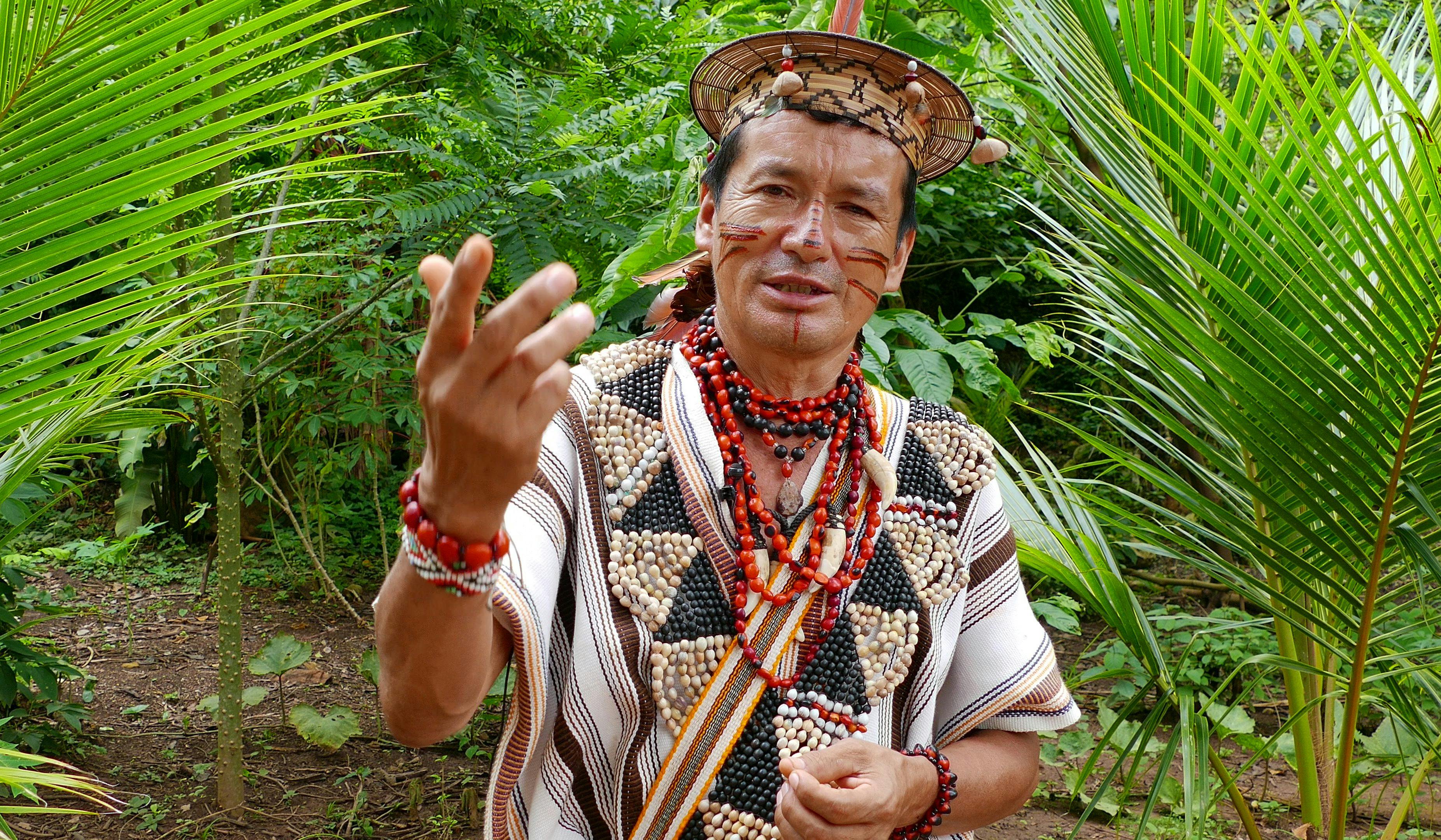
Is it really so dangerous?
Well, I can tell you many people have tried to go there but it has gone wrong. It has rained and plenty of lightning has fallen. That is why I told you that "he" doesn't permit people to go just for the sake of making a promenade. You "must go" with a person who really knows the place, "an authorised one."
Therefore you cannot hold a celebration day for that tree, as happened for the equinox, the fire and the other gods?
No, not in that way. We could do it, celebrate it, thank it, venerate it, sitting there talking to him as well as in our habit to chew coca and share it with him; but as I said "only going with authorised people" and not as a typical celebration day.
You repeated several times "only with authorised people," why?
Well, you see, there is a specific ritual to conduct, and a high degree of respect to pay if you don't want to get in trouble, very bad trouble. One thing that can appear to be silly to you gringos [how Peruvians refer to Caucasian people] is "the way we relate with this tree." For example, men, we as males when we go there we refer to the tree as a "Grandmother," while if they go women have to refer to him as a "Grandfather."
So there are many people who simply would like to go for a visit but they are clearly told that it might be very dangerous and it can end badly.
Thank you very much indeed, chief Wolf.
Some days later we undertook the excursion to Maniri, the sacred tree, as related in MAPINIKI: Interactive History of Our Ashaninka-Yanesha Native Community (Giammarresi 2020: 283) a comprehensive multimedia book on the history of this community.
As time went on, the original project of a simple pamphlet about medical plants has become a bigger project—entitled 'My Indigenous Roots'—with the aim of transcribing the oral traditions of the indigenous peoples of the Peruvian Amazon into multimedia books, which besides the cited book of Mapiniki includes an interactive book of ancestral short stories and a film about the challenges of a Yanesha Sage living a traditional life in the third millennium. These are all available at www.wocmultimedia.biz.
References
Giammarresi, A. 2020. MAPINIKI: Interactive History of Our Ashaninka-Yanesha Native Community. Cilavegna, Italy: World On Communications.
